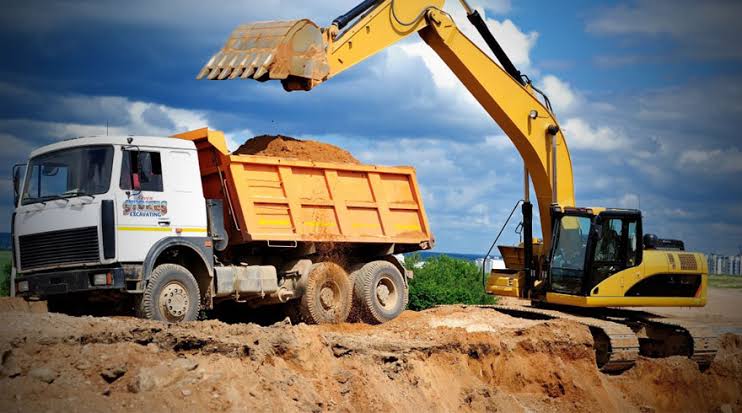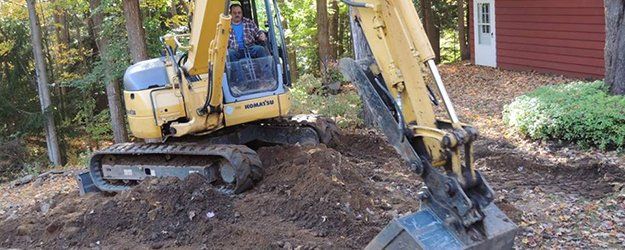Expert Septic Ohio - Trusted Septic System Experts in Ohio
Expert Septic Ohio - Trusted Septic System Experts in Ohio
Blog Article
Revealing the Art of Excavation: Pro Tips for Safe and Productive Excavating
As dirt is turned and earth is relocated, the details of excavation expose themselves, requiring an eager understanding of devices, dirt composition, safety protocols, and ecological considerations. The competence required to navigate these components effectively can imply the difference in between an effective excavation job and a possible catastrophe.
Importance of Proper Devices
To guarantee the security and efficiency of any kind of excavation project, making use of the proper equipment is critical. Excavation tasks vary in extent and intricacy, ranging from small domestic landscape design tasks to large-scale building and construction endeavors.
Excavators are essential items of machinery in any kind of excavating operation. These flexible makers can be found in various sizes to suit different job requirements. Mini excavators are ideal for smaller sized tasks, while larger excavators tackle a lot more considerable projects successfully. Backhoes are one more essential equipment kind, incorporating the functions of a loader and an excavator in one device. They are useful for tasks requiring flexibility and maneuverability.
Excavators excel in jobs that call for pressing large quantities of dirt or particles. By investing in the proper tools, excavation projects can be finished safely, on time, and with precision.
Recognizing Dirt Composition
A thorough understanding of dirt make-up is essential for carrying out excavation tasks with accuracy and safety and security. Recognizing the different types of soil is essential as it directly impacts excavation methods, tools choice, and general job effectiveness.
Sand bits are the largest and offer great drain but provide little cohesion. Silt fragments are smaller sized than sand yet larger than clay, providing modest water drainage and cohesion. Clay particles are the tiniest and offer high cohesion yet inadequate drain. Raw material, such as rotting plant material, affects dirt fertility and security.
Before starting excavation, carrying out dirt examinations to determine its structure and qualities is important. This details helps in selecting the suitable tools, carrying out precaution, and developing excavation techniques customized to the particular soil conditions - dump truck companies in ohio. By comprehending dirt structure, excavation experts can boost job outcomes while making sure safety and adherence to finest methods
Precaution and Protocols
Recognizing soil structure is the cornerstone whereupon security actions and protocols for excavation jobs are built, guaranteeing the health of workers and the success of the undertaking. When it concerns security throughout excavation, there are several key actions that must be carried out to minimize risks and stop mishaps.
Primarily, prior to any type of excavating begins, a detailed inspection of the website must be carried out to identify any type of possible threats such as below ground energies, unsteady soil conditions, or neighboring frameworks that can posture a threat. It is important to have a skilled person supervise the excavation process to guarantee look what i found that all security protocols are followed purely.
Additionally, all workers included in the excavation should be effectively trained in risk-free excavating techniques and the proper operation of tools. Individual protective equipment (PPE) such as difficult hats, high presence apparel, handwear covers, and security boots must be put on in all times to minimize the risk of injuries. septic ohio. Routine safety and security conferences and tool kit talks need to additionally be performed to keep all workers informed regarding prospective dangers and enhance risk-free job methods. By sticking to these security procedures and methods, excavation jobs can be completed efficiently and without incident.
Effective Excavation Preparation
When beginning on an excavation task, precise preparation is vital to guarantee efficiency, safety, and successful end results. Reliable excavation planning involves several key actions that are crucial for the smooth execution of the task.
Once the site analysis is complete, the next action is to create a clear timeline and routine for the excavation tasks. This includes determining the sequence of tasks, tools requirements, and manpower allowance. Appropriate scheduling aids avoid delays and makes certain that the task remains on track.

Additionally, interaction amongst all group participants is critical during the planning phase. Clear directives, regular updates, and effective coordination are crucial for an effective excavation job. By spending time and initiative in thorough preparation, excavation groups can substantially boost productivity, reduce dangers, and achieve successful outcomes.

Handling Ecological Considerations
With raising emphasis on environmental sustainability in building and construction methods, managing ecological considerations has actually ended up being a crucial facet of excavation jobs. Excavation tasks have the prospective to impact the surrounding setting through soil disintegration, sediment drainage, why not try these out habitat disturbance, and contamination of water sources. To minimize these threats, it is vital to execute ideal practices that focus on environmental security.

Moreover, appropriate waste administration is vital to protect against dirt and water contamination. Applying procedures for the disposal of hazardous products, recycling of waste products, and decreasing the usage of dangerous chemicals can dramatically lower the environmental impact of excavation tasks. By integrating these techniques right into excavation planning and implementation, building and construction business can guarantee that their projects are not just risk-free and productive but also eco accountable.
Verdict
To conclude, grasping the art of excavation requires a comprehensive understanding of appropriate equipment, dirt structure, safety actions, and efficient planning. By following these standards and thinking about environmental variables, excavations can be carried out safely and effectively. It is critical to prioritize safety and performance in every digging task to guarantee successful results.
As soil is transformed and planet is moved, the ins and outs of excavation disclose themselves, demanding an eager understanding of equipment, dirt composition, safety and security protocols, and ecological considerations.To make sure the safety and performance of any excavation job, utilizing the proper tools is vital.A comprehensive grasp of dirt composition is essential for carrying out excavation projects with precision and safety and security. Comprehending the various types of soil is critical as it directly this website affects excavation methods, equipment option, and overall project effectiveness. By recognizing soil structure, excavation experts can enhance project outcomes while making sure safety and security and adherence to best methods.
Report this page